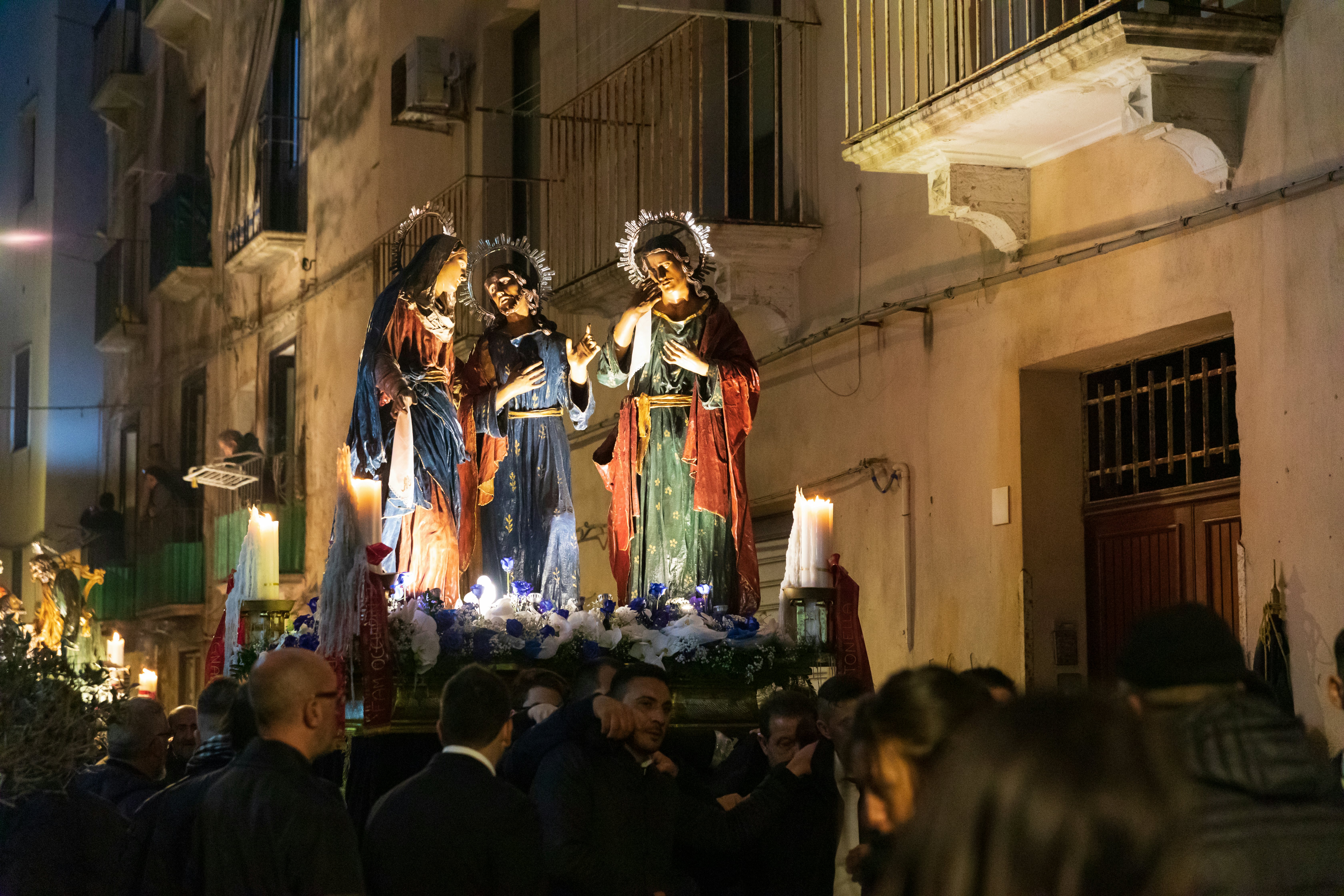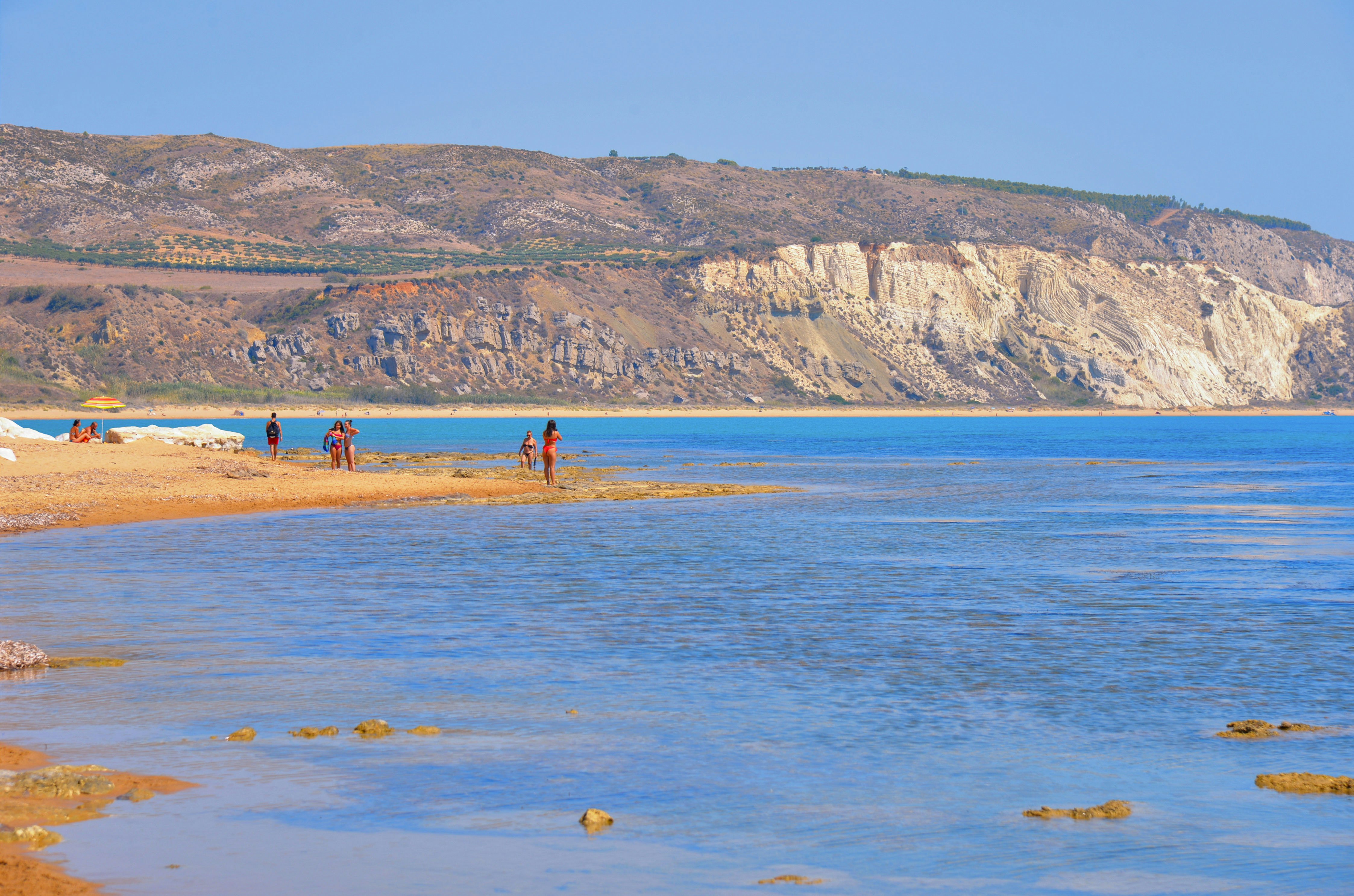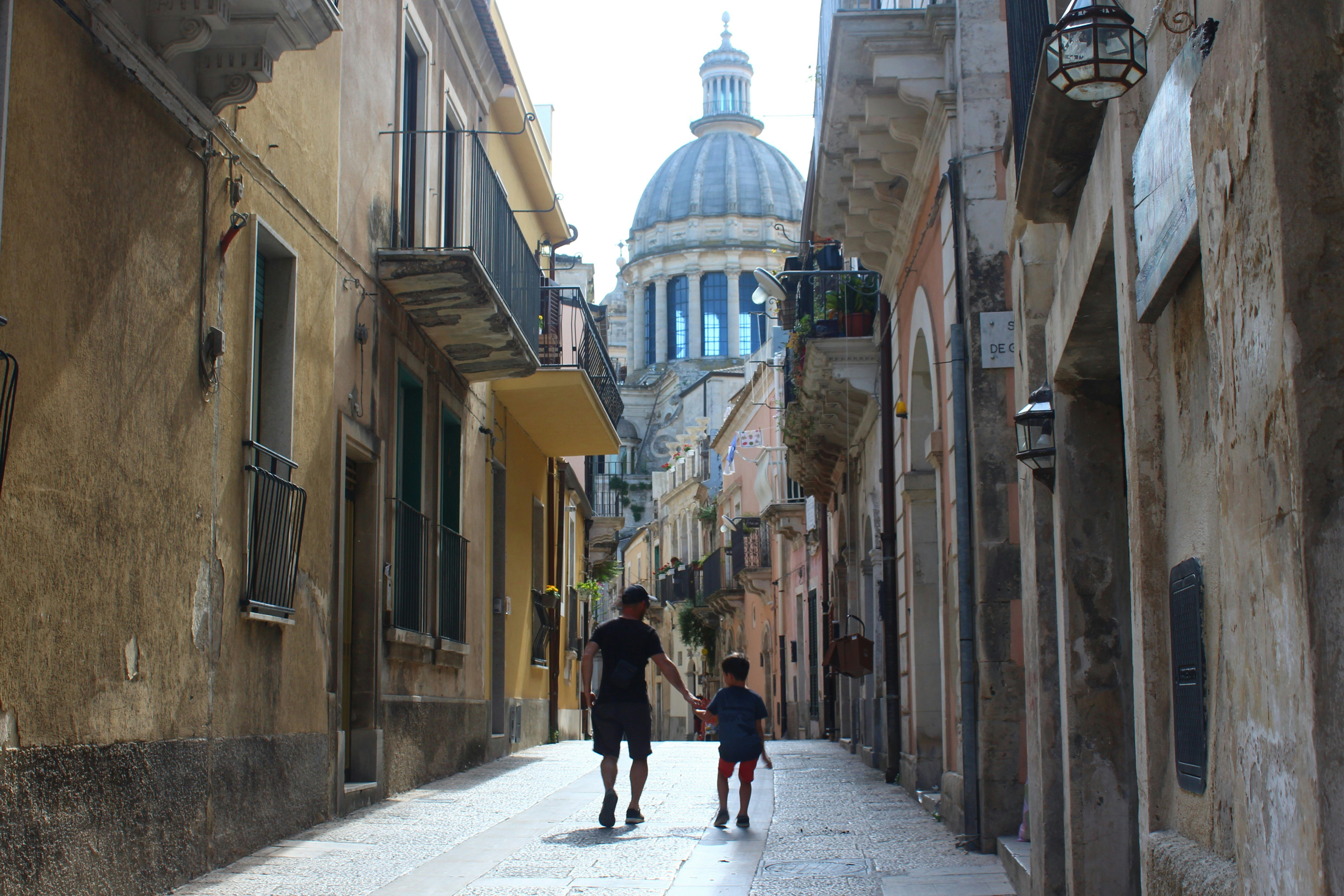

Getting lost in the hilly, magical backstreets of history Ragusa Ibla won’t cost you a cent. Jonathan Stokes for Lonely Planet
In the Italian order of things, Sicily is inexpensive – cheaper than mainland Italy, certainly, and outstandingly good value when it comes to a sun-soaked dolce vita holiday, with long beach days and too many servings of mulberry granita to count.
This island province is one of the few places in Europe where you can still buy a coffee for under €1 (US$1.17) and an ice-cream cone for €2.50 (US$2.93), then lay down your towel on a spiaggia libera (free public beach) with relative ease.
Over the centuries, history, Mother Nature and Europe’s most active volcano have endowed Sicily with a heap of riches. In the island’s wild and empty interior, marauding Saracens settled hilltop villages such as Enna – which has stunning views of hills and valleys that don’t cost a penny to take in. In the aftermath of a deadly volcanic eruption in 1669 and earthquake in 1693, Sicily’s golden age took off in its baroque, drop-dead-gorgeous towns (including Catania, Noto, Ragusa, Modica and Syracuse) – all free to wander and admire endlessly.
There’s not one “best month” to visit this all-year destination. Still, savvy travelers should plan their trip windows to include the first Sunday of the month, when many state museums, monuments and attractions – including the island’s most enthralling archeological site, the UNESCO-listed Valley of the Temples – waive their admission fees for the day.
Here are 12 other ways to get under Sicily’s skin – without spending a cent.

1. Soak up street life in old Palermo
Pushcart vendors hawking hand-shaved ice, Sicilian pop blasting from Piaggio Ape three-wheeler taxis, coppersmiths hammering out tin pots and market cooks grilling offal in the street: few cities provide such an intoxicating kaleidoscope of sights, sounds and smells as Sicily’s noisy, chaotic capital. Embrace the sensory overload – for this show is totally gratis. Start on the people-packed intersection of Quattro Canti, with the sun providing a light show that unfolds each day on a perfect circle of curvilinear facades.
Lap up the local passion for eating – on the street, any time of day – with a passeggiata (afternoon stroll) along the city’s busiest pedestrian strip, Via Maqueda. Set a slow pace to absorb the hypnotic whirlwind of shops, street stalls and sellers flogging cheap jewelry, faux majolica-print flat caps, €3 (US$3.51) plastic beakers of freshly squeezed pomegranate juice and much more. Linger on Piazza Bellini to catch a busker singing. Wander a market…you get the idea.
Planning tip: Every neighborhood has an open-air market, which turns the main street into a tunnel of parasols, tarps and makeshift corrugated-iron sunshades. Monday to Saturday markets in Ballarò, Il Capo and Vucciria are the most historic, boisterous and best. Visit in the morning, bring your own bag and don’t expect much bargaining.
2. Admire Giacomo Serpotto’s celestial stucco masterpieces
Sicily’s stash of sacred art is dizzying. And some of the most beautiful masterpieces have white stucco as their medium, sculpted in meticulous detail by late baroque and rococo master Giacomo Serpotta (1656–1732). The Palermo-born sculptor grew up in the Kalsa neighborhood, and modeled the playful, chubby-cheeked putti (cherubs) in his lifelike narrative scenes on local street urchins (or so the story goes). Decide for yourself in the 18th-century Oratorio del Rosario di San Domenico (search for the lizard – Serpotto’s signature) and the tiny, medieval Chiesa di Sant’Agostino, with its serene cloister garden. Both Palermo churches are free to enter – and both are simply sublime.
Local tip: After you’ve visited Chiesa di Sant’Agostino, take a wander through the surrounding fabric market. And expect bargains: you’ll pay no more than €10 ($11.70) for your very own made-to-measure tablecloth adorned with a pattern of Sicilian lemons, cut and sewn on the spot.
3. Learn a sober lesson about the Sicilian Mafia
You’ll be hard-pressed to get any Sicilian you don’t truly know to open up about the island’s horrifying history with the Mafia. Yet the words and photographs at Palermo’s No Mafia Memorial speak volumes. To help unravel what has made Sicily’s capital tick – for better or worse – make this compelling multimedia space on main street Via Vittorio Emanuele your first stop. Modern-day murders and massacres aside, the exhibition provides fascinating insight into the history of this complex underworld organization. Feudal lords in the 15th century hired bandits to steal farmers’ livestock, for example, while by the 16th century, gangsters were working the city’s markets for extortion money.
Planning tip: It’s a 10-minute walk from here to the Mura della Legalità (Wall of Legality), a street-art wall mural on Piazza degli Aragonesi that depicts 26 unsung heroes who died in the anti-Mafia fight.

4. Revel in the din and drama of Catania’s fish market
In Sicily’s second city of Catania, tables at La Pescheria groan under the weight of decapitated swordfish, slippery moray eels, silver anchovies and trays full of clams, mussels, sea urchins and all manner of sea life. Plunging into this spectacular open-air fish market is not for the faint-hearted; expect to see blood and guts marbling stalls and pools of red water underfoot. If you want a bit of distance, observe the spectacle from the elevated terrace overlooking the market on Piazza Alonzo di Benedetto.
Planning tip: Hit the market early: it opens at 7am and will be getting hosed down by 1pm. The access point to the market – through a tiny passageway by the side of the gushing Fontana dell’Amenano (1867) on Piazza del Duomo – only heightens the drama.
5. Learn how Sicilians harvest salt
Free, fascinating, two-hour guided tours of the pink salt pans south of Trapani are the real deal. Don sturdy shoes – depending on the month, conditions can be wet and muddy – and stride out with a WWF naturalist in the protected Riserva Naturale Saline di Trapani e Paceco. Sprawling across 2470 acres, the reserve’s salt pans and coastal lagoons are a favorite landing spot for wintering flamingoes, white herons and dozens more migratory birds. Between July and September, workers harvest salt to provide gourmets with prized rock salt, salt crystals and table salt.
Planning tip: Plan ahead: free guided tours, departing from the visitor center inside the Mulino Maria Stella windmill, require booking a minimum of one week in advance. February to April and September to December are the prime periods to observe migratory fauna in the reserve; some areas are off-limits in summer, when they nest.

6. Celebrate Easter with the Misteri di Trapani
If you’re in the small western port town of Trapani for Easter, witnessing its traditional four-day celebration of the Passion of Christ is non-negotiable. The high point of the celebrations are the processions of misteri – life-sized wooden statues of Mary, Jesus and other biblical figures – accompanied by a Trapanese band, sending the crowd into a delirious fervor. Nightly processions begin on the Tuesday before Easter Sunday and peak around 2pm on Good Friday.
Planning tip: Year-round, you can admire the town’s famous misteri inside Chiesa Anime Sante del Purgatorio. The church is free to visit; most of the wooden, hand-painted and clothed statuary groupings representing 20 scenes from the Passion and Death of Christ are 17th-century originals.
7. Catch sunrise and an Egadi Island panorama on Favignana
Sunrise, when the air is cooler and the summer sky is marshmallow pink, is the best time to tackle the steep and sinuous footpath up to Castello di Santa Caterina. Crowning Sicily’s lesser-known island of Favignana, this ancient Saracen fort was rebuilt atop Monte Santa Caterina (287m/942ft) in the 15th century. At the top, the 360-degree panorama of the Egadi Islands is sensational – little wonder the tower served as a military observation station during WWII.
Planning tip: Pick up the footpath behind Ex-Stabilimento Florio delle Tonnare di Favignana e Formica at the port. Count on an hour of walking.

8. Splash, snorkel and frolic like a 1960s movie star on Isola Bella
There’s no escaping the fact that glamor queen Taormina is both chic and pricey. Yet lying out like a movie star on the small beach on Isola Bella – a crumb of an island off Mazzarò, at the bottom of the clifftop town – doesn’t cost a cent. Ditto for the unforgettable walk from here up to Taormina and beyond to Monte Tauro. The reward: a priceless eagle-eye panorama of the town, the world’s most dramatically situated ancient Greek amphitheater (which has free admission the first Sunday of the month) and the electric-blue Ionian Sea.
Planning tip: Count 700-plus steps and 1.3 miles (2.2km) from Spiaggia di Isola Bella up to Taormina (45 minutes to one hour); catch your breath and get a swoon-worthy view midway on the Belvedere di Via Pirandello panoramic terrace. It’s then an additional 543 steps along the signposted Via Crucis trail to Santuario Madonna della Rocca and a Saracen castle beyond.
9. Clamber across a mirror copy of the iconic Scala dei Turchi
Contrary to social-media images of tourists scampering across the shimmering Scala dei Turchi, a 20-minute drive from Agrigento, it is strictly forbidden to set even one foot on the photogenic staircase-shaped cliff. Instead, you can admire the monumental white rock formation from the neighboring beach, or from the signposted Punto Panoramica viewpoint on the SP68 road above.
Still craving a clamber up white rocks? Go rogue with a 45-minute drive east along the coast to the Riserva Naturale di Punta Bianca. In this desolate, wind-whipped reserve, a painfully bumpy, pot-holed dirt track leads to the sea – and a blindingly white, mirror-image version of Scala dei Turchi.

10. Seek out wild beauty on empty beaches
Sicily’s famously picturesque coves and sensational gold-sand beaches are highly sought after – and for good reason. Yet the seemingly endless swaths of white sand ribboning the protected shoreline in the Riserva Natural Torre Salsa rank among the most isolated, beautiful beaches in all of the Mediterranean.
You’ll need your own wheels to get here, Google Maps will surely send you up the garden path more than once, and the dirt access road isn’t for timid drivers. But when you do finally land on Torre Salsa’s long, deserted beach, you can be assured of a pristine peace and tranquility no money can buy.
11. Savor a treasure chest of handmade ceramics
The Scalinata di Santa Maria del Monte is a 142-step tile staircase that has linked Piazza Municipio with Chiesa di Maria del Monte in Caltagirone since the 17th century – and this artisanal marvel is free to ascend. The colorful majolica tiles were only laid in the 1950s, yet the rainbow of color mimicking decorative styles from the 10th to the 20th centuries is gorgeous – as July and August’s camera-happy hordes confirm. Don’t miss the cathedral’s ceramic-tiled dome and the open-air collection of ceramic vases in the elegant city park Giardino Pubblico, both also free.
Planning tip: On the Mediterranean coast, the laid-back fishing port of Sciacca is an unsung rabbit warren of old-world streets, churches, palazzi and artisan boutiques brimming with handmade ceramics at every turn.

12. Get lost (and a bit breathless) in Ragusa Ibla
Southeast Sicily is peppered with beautiful baroque towns, and historic Ragusa Ibla is one of the most handsome, hilly – and labyrinthine. Switch off your internal compass and simply wander at will, exploring the tangle of nooks and lanes to eventually emerge on Piazza Duomo at Duomo di San Giorgio, a grand design of superstar baroque architect Rosario Gagliardi.
Planning tip: Arriving in modern-town Ragusa Superiore, continue on foot. The dramatic staircase descent down the Salita Commendatore – a zigzagging staircase with 300-odd steps and spectacular views – to the old town is a key part of the Ragusa experience.
Nicola Williams co-wrote the current and upcoming 11th edition of Lonely Planet’s Sicily guidebook.
















